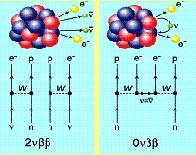

Particle Astrophysics
Particle Astrophysics focuses on phenomena in astrophysics and cosmology associated with the properties of elementary particles ranging from neutrinos to Weakly Interacting Massive Particles (WIMPS), hypothesized as the Cold Dark Matter (CDM). The USC group was early in the field and made the first terrestrial CDM search. CDM is needed to explain the dynamics of galaxies and important features of cosmological models used to explain the evolution of the universe. The gravitational effects of CDM on the velocity distribution of stars in spiral galaxies, is well established. It was motivated by the discovery in 1933 by Fritz Zwicky that far more mass is needed to explain the dynamics of Globular Clusters than appears in stars and dust. In 1985, the USC group, inspired by the astrophysics group at Max Planck Institute in Munich, led the first terrestrial search for the CDM in the Homestake goldmine in Lead, South Dakota. The USC has also led several searches for elementary particles called axions emitted by the sun. Axions result in the theory by Roberto Peccei and Helen Quinn that explains why the strong interactions of quantum chromodynamics, do not violate charge-parity (C-P) symmetry. The USC group now concentrates on the MAJORANA, and CUORE Experiments which are searches for the exotic zero-neutrino nuclear double-beta decay (0νββ − decay) which is only possible if neutrinos have mass and are their own antiparticles (Majorana particles). (0νββ − decay also violates the law of lepton-number conservation. Neutrino oscillation experiments imply that neutrinos may well have enough mass to allow this decay to be measurable, but they can only measure mass differences. The measurement of the decay rate would determine the absolute masses of all three neutrino mass eigenstates.